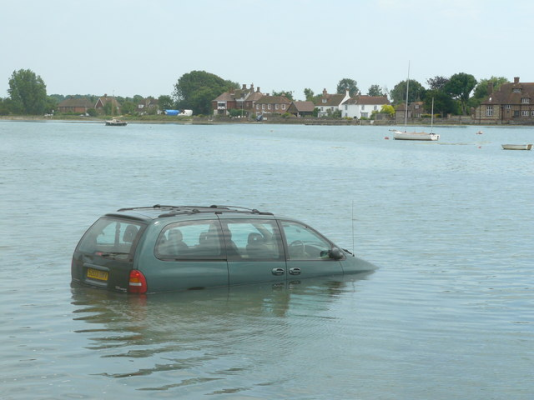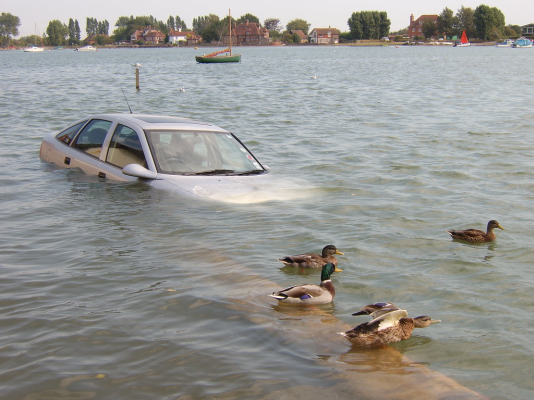Navigation
Install the app
How to install the app on iOS
Follow along with the video below to see how to install our site as a web app on your home screen.
Note: This feature may not be available in some browsers.
More options
Safe depth of flood water to go through in a GLC
- Thread starter REDCAPPER
- Start date
Have you considered the height of the exhaust and catalytic converter also the serpentine belt will.throw water around the engine bay.
Are the door seals in good condition and there is probably a wiring loom somewhere.
HTH
Jim
Are the door seals in good condition and there is probably a wiring loom somewhere.
HTH
Jim
MikeInWimbledon
Hardcore MB Enthusiast
- Joined
- Nov 8, 2014
- Messages
- 14,376
- Car
- SL350 (Ex S211 E500,W212 E500, C216, S212E500, W211E500 5.5, W221S500, S211 E500, SL500, S500, E55)
How long for? Seconds, minutes?
Are you only interested in the effect on the engine?
Not on the the exhaust, fuel lines, electrics / wiring, hvac, the carpets, rubber seats, brake pipes, and bodywork etc?
Do we know at what depth the GLC starts to float?
Are you only interested in the effect on the engine?
Not on the the exhaust, fuel lines, electrics / wiring, hvac, the carpets, rubber seats, brake pipes, and bodywork etc?
Do we know at what depth the GLC starts to float?
Last edited:
- Joined
- Jan 21, 2005
- Messages
- 30,928
- Location
- Mittel England
- Car
- Smart ForFour AMG Black Series Night Edition Premium Plus 125 Powered by Brabus
I don’t know the definitive answer but a Google search generally supports your suggestion of 300mm. There is sure to be a relatively generous margin of safety in that, especially if driven by someone who is experienced in driving through water but the vast majority of people aren’t.
Unfortunately most people drive through water far too fast and cause a bow wave to form and break over the bonnet, resulting in water being ingested into the engine. The reverse is better safer, driving slowly through water reduces the likelihood of a bow wave forming and breaking over the bonnet.
Another key consideration is that flowing water reduces the waving depth compared to standing water and so the published wading depth (according to Mercedes-Benz specification) will take this into account too, ie assuming that the car will be driving too fast in flowing water.
I live in an area which floods regularly and unfortunately stranded cars in the middle of floodwater is not an unusual sight. Usually driving too fast is the cause, but sometimes it’s because the water deepens more than the driver expected. Either way the end result is the same.
Unfortunately most people drive through water far too fast and cause a bow wave to form and break over the bonnet, resulting in water being ingested into the engine. The reverse is better safer, driving slowly through water reduces the likelihood of a bow wave forming and breaking over the bonnet.
Another key consideration is that flowing water reduces the waving depth compared to standing water and so the published wading depth (according to Mercedes-Benz specification) will take this into account too, ie assuming that the car will be driving too fast in flowing water.
I live in an area which floods regularly and unfortunately stranded cars in the middle of floodwater is not an unusual sight. Usually driving too fast is the cause, but sometimes it’s because the water deepens more than the driver expected. Either way the end result is the same.
T’internet shows the GLC to have between 5 and 7 inches of ground clearance. So even water 300mm (12 inches) deep, the water is up to the floor pan. Besides the risk of hydraulic locking the engine if driving too fast, the exhaust system can fill up with water if steady progress is not made. That is a very expensive repair.
At 18 inches deep, the risk of the car becoming a boat is getting quite real. At 24 inches deep, the water is at the top of the wheels, (if the car isn’t already floating).
Finally, how does one know the true depth of the water before trying to wade through it?
At 18 inches deep, the risk of the car becoming a boat is getting quite real. At 24 inches deep, the water is at the top of the wheels, (if the car isn’t already floating).
Finally, how does one know the true depth of the water before trying to wade through it?
grober
MB Master
In todays Mercedes models heavily dependent on electronic components - canbus, microprocessors ,sensors, etc its best to avoid wading situations altogether!
Scanario 1 you are proceeding carefully / slowly thro a short patch of flood water when a large truck/van/tractor with greater flood clearance gets tired of your slow speed and sweeps past you setting up a big bow wave-you're screwed.
Scanario 1 you are proceeding carefully / slowly thro a short patch of flood water when a large truck/van/tractor with greater flood clearance gets tired of your slow speed and sweeps past you setting up a big bow wave-you're screwed.
Petrol Pete
Hardcore MB Enthusiast
Anecdotally some AMG cars have hydro locked and blown the engine simply by having ben splashed by a truck coming in the opposite direction in a rain storm.
MikeInWimbledon
Hardcore MB Enthusiast
- Joined
- Nov 8, 2014
- Messages
- 14,376
- Car
- SL350 (Ex S211 E500,W212 E500, C216, S212E500, W211E500 5.5, W221S500, S211 E500, SL500, S500, E55)
Putney High Tide Club on Facebook shows a succession of Mercedes and others caught out by Spring and Autumn tides on the Tideway.
An expensive mistake

 fb.watch
fb.watch
An expensive mistake

Mercedes Scuba-Class Thanks Jamie Kirkwood | By Putney High Tide ClubFacebook
Mercedes Scuba-Class Thanks Jamie Kirkwood
 fb.watch
fb.watch
Last edited:
chic0821
MB Enthusiast
- Joined
- Jul 20, 2016
- Messages
- 1,252
- Location
- Scotland
- Car
- S63 AMG Coupe, Range Rover Fifty, 992 Porsche Carrera 4S
Don't do itsafe depth of flood water a GLC can go through without ruining the engine.
A few years ago, I wrote off my brand new (2 weeks old) CLS. Flooded road, did not look too deep. Stopped, had a look & dafty me decided to go. Got about 3 car length's in, then decided NO. As this thought was processing through my tiny brain, it cut out. Decided not to try restart & got out. Water depth was just over the bottom of the door, so not really too deep. Car recovered to Mercedes & written off. They told me that the computers were fried plus ingress of water when I opened the door. They did not bother checking the engine. Anyway a few months later, I got a call from a guy, who asked if I had the second key, which I did. He said they were putting it back on the road & could I send him the key.
- Joined
- Jun 24, 2008
- Messages
- 50,721
- Location
- London
- Car
- 2022 Hyundai IONIQ 5 RWD / 2016 Suzuki Vitara AWD
Don't do it
A few years ago, I wrote off my brand new (2 weeks old) CLS. Flooded road, did not look too deep. Stopped, had a look & dafty me decided to go. Got about 3 car length's in, then decided NO. As this thought was processing through my tiny brain, it cut out. Decided not to try restart & got out. Water depth was just over the bottom of the door, so not really too deep. Car recovered to Mercedes & written off. They told me that the computers were fried plus ingress of water when I opened the door. They did not bother checking the engine. Anyway a few months later, I got a call from a guy, who asked if I had the second key, which I did. He said they were putting it back on the road & could I send him the key.
And, so, essentially the PO's question is mostly irrelevant... unless you stop the car and walk into the puddle or stream, you can't tell how deep the water is. And I wouldn't rely on flood markers, either, because you can't be sure that the road under water is level and not damaged or riddled with potholes.
I'd say that a shallow puddle is probably fine, but drive slowly for in case if hidden potholes, anything else should be avoided unless the car has been modified to cope with travelling through water.
See also:
Helpp ic module | Electronics and Audio
So guys i have a mercedes gla the passenger side foot well got flooded, i dried it all out cleaned it up and the instrument cluster module was burnt out. so i bought a new one same part numbers and now the car will not start. I am getting these fauld codes when i connect it to launch...
- Joined
- Jun 24, 2008
- Messages
- 50,721
- Location
- London
- Car
- 2022 Hyundai IONIQ 5 RWD / 2016 Suzuki Vitara AWD
It’s the water getting into your engine via the air inlet/filter that ruins your engine.
Hence off roaders having a snorkel fitted.
True, but on modern cars, there's also the issue of electronics getting fried as result of water ingress. The link I posted above was from a member who had water ingress to the passenger footwell that killed the instrument cluster, and the only option appreas to be a brand new one from MB fitted and coded for ££££.
Petrol Pete
Hardcore MB Enthusiast
A quick watch of internet videos of people who buy 'wrecks' from salvage sites (particularly in the USA) sees the buyer often giving 'water damaged' cars a wide berth.
Often when the rest of the car looks fine.
Often when the rest of the car looks fine.
- Joined
- Jul 12, 2011
- Messages
- 17,033
- Location
- Near Salisbury
- Car
- MX5 1.8 Sport, Range Rover 5.0 SC, BMW X1
I was always of belief that water damaged vehicles in the UK are classified as Cat B?A quick watch of internet videos of people who buy 'wrecks' from salvage sites (particularly in the USA) sees the buyer often giving 'water damaged' cars a wide berth.
Often when the rest of the car looks fine.
- Joined
- Jun 24, 2008
- Messages
- 50,721
- Location
- London
- Car
- 2022 Hyundai IONIQ 5 RWD / 2016 Suzuki Vitara AWD
I was always of belief that water damaged vehicles in the UK are classified as Cat B?
Not always, good explanation here:
Hi,
A friend had his Porsche Cayenne written off due to flood damage in the recent Dubai heavy storm, in April.
It took a lot of to & fro with his insurance company to finally agree that it was a write off.
I reminded him that if it did get repaired that he should sell it immediately.
Flood water gets into the electrical connectors - of which there are literally hundreds of individual connections on a modern car.
Over time - the individual connections can corrode that then brings up random and very difficult to trace faults.
His car has been sitting outside since April and the temperature & humidity inside a wet car must be horrendous - all good for hidden corrosion!
I would not touch a flood damaged car with a very long barge pole - unless I was going to break it up and sell individual body parts, wheels, undamaged leather interiors etc.
Cheers
Steve
A friend had his Porsche Cayenne written off due to flood damage in the recent Dubai heavy storm, in April.
It took a lot of to & fro with his insurance company to finally agree that it was a write off.
I reminded him that if it did get repaired that he should sell it immediately.
Flood water gets into the electrical connectors - of which there are literally hundreds of individual connections on a modern car.
Over time - the individual connections can corrode that then brings up random and very difficult to trace faults.
His car has been sitting outside since April and the temperature & humidity inside a wet car must be horrendous - all good for hidden corrosion!
I would not touch a flood damaged car with a very long barge pole - unless I was going to break it up and sell individual body parts, wheels, undamaged leather interiors etc.
Cheers
Steve
ALFAitalia
MB Enthusiast
- Joined
- Feb 19, 2022
- Messages
- 9,122
- Location
- Bognor Regis
- Car
- 2010 Mercedes W212 E Class E350 CDI Sport, 2006 Mercedes W169 A Class A170.
Agree 100%....older cars are not so much of a risk. I know of a 89 Golf cabrio that was caught in a rising tide at Bosham harbour front (people seem unable to see the tide warning signs!!). That went in up to its handles when it was only a few months old. The owner bought it back and we got it back on the road for him for not that much cash.....I still see it around today. Remarkably rust free and shiny considering the time it spend submerging in sea water!!!
This is pretty typical....there is a pub nearby and people just sit and watch them go under....great fun!!


This is pretty typical....there is a pub nearby and people just sit and watch them go under....great fun!!


Users who are viewing this thread
Total: 1 (members: 0, guests: 1)
Similar threads
- Replies
- 25
- Views
- 5K

